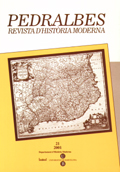El historiador como traductor
Keywords:
Dialogic Hermeneutics, Verständigungsversuche, multiculturality, irenism, Theory of history.Abstract
Assuming the dialogic approach of the H.-G. Gadamer's and P. Ricoeur's hermeneutics (there is only language if it contains an attempt at understanding and agreement [Verständigungsversuche ), the aim of this paper is to analyze the possibilities and requirements offered and demanded to historians now (in our new age of multiculturality and globalization) for performing in a deeper sense than the traditional one, their noble function of making different cultures mutually understood.
Historians have an exceptionally good experience of the polymorphism of human nature because they are familiar with the fact that, even inside the same culture, words change meaning (partly) over time. These qualifications allow historians to translate the understanding of the world from one culture to another. The intercultural dialogue (the greatest challenge of the XXIst century) requires that our communication, always influenced by a language pervaded with troubling experiences, can be liberated by the catharsis of a history read jointly and irenically. Historians can collaborate in this way in rediscovering and transforming a world which we share increasingly closely, with the conscious of our common existential necessity and interdependence.
Downloads
Published
How to Cite
Issue
Section
License
Copyright (c) 2001 Fernando Sánchez Marcos

This work is licensed under a Creative Commons Attribution-ShareAlike 4.0 International License.
Authors must agree with the following terms:
1. The author keeps authorship rights, ceding the journal the right to first publication.
2. Texts will be disseminated with a Creative Commons Attribution 4.0 International License. Which allows for the work to be shared with third parties, as long as they recognise the work’s authorship, the original publication in the journal and licensing conditions.
This requires acknowledging authorship appropriately, providing a link to the license, and indicating if any changes have been made. It can be indicated in any reasonable way, but not in a manner that suggests the licensor endorses or sponsors the use of the text.
If content is remixed, transformed, or new content is created from the journal's texts, it must be distributed under the same license as the original text



